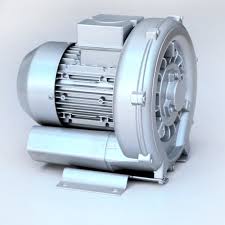The Roots Blower
A Roots blower is a type of positive displacement pump that utilizes two rotating lobes (rotors) within a casing to move fluids or gases. It operates by trapping a fixed volume of air or gas and carrying it from the intake to the outlet, creating airflow. These blowers are known for delivering a large volume of air at a relatively low pressure, making them suitable for applications like pneumatic conveying and certain vacuum systems.
Here’s a more detailed explanation:
Key Features and Operation:
-
Positive Displacement:Roots blowers are positive displacement pumps, meaning they displace a specific volume of fluid with each rotation of the rotors.
-
Two Lobes/Rotors:The core of the blower consists of two rotating lobes (often symmetrical and often called rotors) that intermesh within a housing.
-
Valve-less Design:They are typically valve-less, meaning there is no internal compression within the blower itself.
-
External Compression:Compression occurs outside the blower as the trapped air is forced into a system with a pressure resistance, like a water column or pipe.
-
Low Pressure, High Volume:Roots blowers are typically used for applications requiring a large airflow volume with a small pressure increase.
Common Applications:
-
Pneumatic Conveying:They are frequently used in pneumatic conveying systems to transport bulk materials through pipes.
-
Vacuum Systems:They can be used alone or in combination with other pumps to create low vacuums.
-
Civil Defense Sirens:Some sirens, like the Federal Signal Thunderbolt Series, use Roots blowers to supercharge their rotors and generate a loud, powerful sound.
-
Industrial Applications:They are also used in various industrial applications requiring a constant airflow without pressure fluctuations.
Advantages:
-
Simple Design:The design is relatively simple, with fewer moving parts compared to other types of compressors.
-
Oil-free Operation:Many Roots blowers are designed for oil-free operation, which is beneficial in certain applications.
-
Constant Airflow:They provide a relatively constant airflow, which is important in many industrial processes.
Disadvantages:
- Low Efficiency: Compared to other compressor types, Roots blowers generally have lower efficiency, especially at higher pressures.
- High Noise Level: Due to the external compression and potential for backflow, they can be relatively noisy.
- Pressure Limitations: They are typically limited to lower pressure applications.
